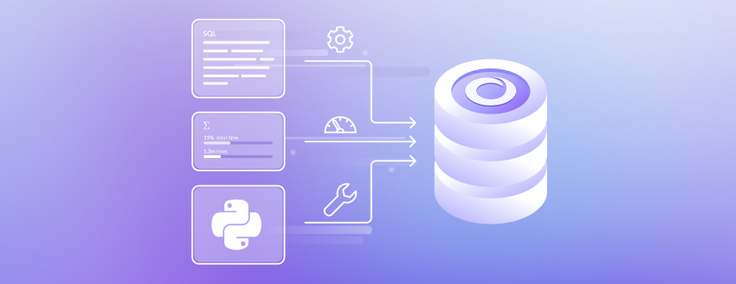
DataFrames are an easy way to manipulate data with Python. As we've gotten more usage of our vector features, we've had questions about ingesting embeddings into SingleStoreDB from Pandas DataFrames directly.
To do that, you need to convert the array containing the vector embedding into a packed byte string using numpy. Using DataFrames, you get both speed and simplicity when loading your embeddings as vectors into SingleStoreDB — especially if you use the approach presented here.
Connection
If you run locally or on a different cloud service, you will need to create a connection string:
1
from sqlalchemy import *2
database_name = 'mydatabase'3
db_connection_str =4
"mysql+pymysql://" +5
connection_user + ":" + connection_password +6
"@" + connection_host + ":" + connection_port +7
"/" + database_name + "?ssl_cipher=HIGH"8
9
db_connection = create_engine(db_connection_str)
With a SingleStore notebook, you simply need to do the following and select the database you want to access:
1
from sqlalchemy import *2
db_connection = create_engine(connection_url)
Getting the Dataset Example
Let’s get a sample dataset from the 2022 Beijing Winter Olympics that include text chunks (first column) and its embeddings (second column). Make sure you have the libraries with !pip3 install
Note: SingleStore-hosted notebooks only require you to install wget library
1
# Install libraries2
import pandas as pd3
import os4
import wget5
import ast6
import numpy as np7
import json8
9
# Get the data10
embeddings_url = "https://cdn.openai.com/API/examples/data/winter_olympics_2022.csv"11
embeddings_path = "winter_olympics_2022.csv"12
13
if not os.path.exists(embeddings_path):14
wget.download(embeddings_url, embeddings_path)15
print("File downloaded successfully.")16
else:17
print("File already exists in the local file system.")18
19
# Import the data as dataframe and converts the column embedding20
# into an array - for cases where you have arrays, you don't need21
# to convert22
df = pd.read_csv("winter_olympics_2022.csv",23
converters=dict(embedding=lambda x: np.array(json.loads(x))))
Create a Table
This DataFrame has two columns:
- text: the text from the wikipedia pages
- embedding: the embedding from the text is stored in a blob column type
We will create a simple table using SQL:
1
CREATE TABLE IF NOT EXISTS winter_olympics_2022 (2
text TEXT CHARACTER SET utf8mb4 COLLATE utf8mb4_general_ci,3
embedding BLOB4
);
Load Your DataFrame Into the SQL Table
Now we want to ingest the embedding into the table we previously created:
1
df.to_sql(2
'winter_olympics_2022',3
con=db_connection,4
if_exists='append',5
index=False,6
chunksize=10007
)
That’s it! The following is slower for ingesting embeddings (JSON_ARRAY_PACK requires additional processing) and needs more lines of code:
1
def insert_records(2
df: pd.DataFrame,3
table_name: str,4
batch_size: int = 10005
):6
stmt = f"""7
INSERT INTO {table_name} (8
text,9
embedding10
)11
VALUES (12
%s,13
JSON_ARRAY_PACK(%s)14
)15
""".format(table_name=table_name)16
17
record_arr = df.to_records(index=True)18
19
for i in range(0, len(record_arr), batch_size):20
batch = record_arr[i:i+batch_size]21
values = [(row[1], str(row[2])) for row in batch]22
db_connection.execute(stmt, values)23
return24
25
insert_records(df, "winter_olympics_2022")
Recap
Because the data was a string from a csv file, we had to convert it into an array using the json module: converters=dict(embedding=lambda x: np.array(json.loads(x))). If you already had your embeddings in a form of array, you can skip that conversion code.
Learn more about all the options using to_sql through the Pandas documentation: pandas.DataFrame.to_sql — pandas 2.0.2 documentation
Get Started with SingleStoreDB

How to build an app with Python and SingleStore
If you are looking to better understand our functionalities around search and vector, I recommend you to start with the Singlestore Helios trial and pick one of the four available notebooks around semantic search.






